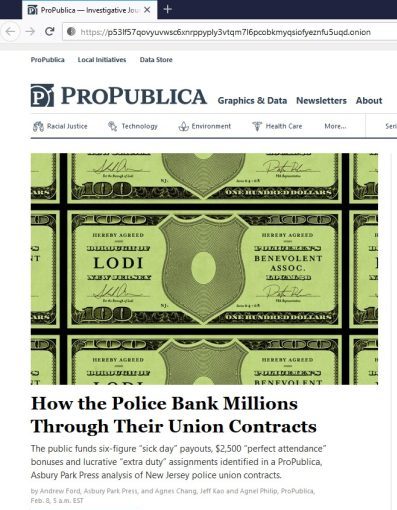The darknet is a part of the Internet that is not indexed by search engines. Researchers Daniel Moore and Thomas Reid of King’s College London categorized the content of 2,723 active sites over a five-week period in 2015 and found that 57 percent of them hosted illegal material.
The 2019 study, conducted by Dr. Michael McGuirez, clearly proves the situation is worsening. Since 2016, the number of potentially dangerous resources has increased by 20%. Notably, the leaders of the darknet are two types of sites: 20% are involved in the distribution of drugs, and 60% are a threat to business – selling stolen information or hacking software. The remaining 20% are divided among other types of criminal activity.
It is worth noting that not all content that is not indexed by search engines is classified as darknet. For example, a huge amount of information is hidden from Google by paid access or requires entering credentials. This data is safe and legal, and belongs to the so-called deep web. Medical records, paid content, closed forums and confidential corporate web pages are just a few examples of the deep web. Experts estimate its volume at between 96% and 99% of the Internet. Interesting statistics show that the average user encounters only a small part of the World Wide Web on a daily basis.
Darknet is a deliberately hidden part of the deep web, and there is no easy way to get there. Various estimates put its volume at about 5% of the “deep web,” but no one knows the exact numbers.
Even if you are not interested in the life of the dark web, that does not mean that it is not already interested in you. A recent report by Into the Web of Profit identified the most popular categories of tools and services present on the Dark Web, Among them:
- Malware attacks; DDoS attacks. The ultimate goal of the event is to paralyze the livelihood of a business.
- Hacking followed by remote access to corporate networks.
- Industrial espionage.
- Instructions, videos and other tutorials for “young hackers”.
- Stolen corporate accounts.
- Organizing phishing attacks.
- Stolen customer bases.
- Corporate and personal financial information.
- Business intellectual property.
Based on the threats studied, the report identifies three risk areas that businesses may face.
The first is reputational damage. There is a huge amount of information on the darknet, which would allow attackers or competitors to torpedo a company’s image. For example, by organizing a “leak” of previously stolen personal customer data or confidential commercial information.
The second – disruption of the company’s performance through phishing, DDoS-attacks, or data encryption.
The third is fraud. This category includes both industrial espionage, which aims to steal new technologies and developments, and smaller, but no less painful illegal operations. For example, stealing money from corporate accounts, which is most often carried out with the help of social engineering techniques.
Ransomware viruses have become particularly popular on the darknet in recent years. Despite the fact that such software has been known for a long time, virus technologies and distribution models have advanced greatly. Ransomware-as-a-service (RaaS) kits have become particularly popular, and quite well-known criminal groups such as REvil and GandCrab specialize in them. These groups develop their own sophisticated programs and distribute them through a network of darknet affiliates. The attacks are directly handled by the groups’ “partners”, who, if the action is successful, pay the developers of the malware 20% to 30% of the revenue. IBM estimates that REvil made $81 million in profits last year.
Basic rules
- Before you take any action to send or provide information about you (including photos, videos, passport information, etc.) to third parties – make sure that these people are known to you personally or have a reliable reputation
- When you send your data via the Internet – use only official sites. Both law enforcement statistics and IT experts unanimously agree that the biggest data leakage channel is phishing schemes, when fraudsters use specially crafted sites that can be accessed via corresponding links. As a result, they end up with your logins and passwords in their hands. By the way, numerous phone calls from “bank security services” (so called audiophishing), after which the cybercriminals receive information on your cards and the money in them, may also be referred to the same way. One of the ways to avoid this is to regularly change logins and passwords to the most visited Internet resources – at least once in six months. Before you take any action to send or provide information about you (including photos, videos, passport information, etc.) to third parties – make sure that these people are known to you personally or have a reliable reputation
It is impossible to be completely protected from leaks: otherwise you would have to give up mobile banking, government services, and most of your documents. But you can minimize the amount of data that can fall into the hands of fraudsters:
- Don’t post photos of documents, including e-tickets and visas, on the Web;
- Don’t post your geolocation publicly or at least do it in a private profile;
- Don’t enter personal and payment information on suspicious sites;
- Don’t follow links in emails and messages if you’re not sure about the sender;
- Use varied and complex passwords in different accounts. You can use a special service for finding passwords for this purpose. Change your passwords at least once every three months;
- Use two-factor authentication wherever possible;
- Don’t indicate your main phone number and e-mail address when registering on the ad sites or filling in forms for getting loyalty and credit cards, or participating in promotions. Instead use an additional or virtual number (many operators have this service);
- Pay attention to applications that require permissions not necessary for their work (in the case of Android), warnings from anti-virus software, and messages about suspicious activity or logins to your account from unknown devices.
Study the privacy policy or the relevant document on the processing of personal data very carefully to see if it can be passed on to third parties. And if these parties are not specified, do not sign any agreements – it will cost you more in the long run.
According to InfoWatch statistics, last year the majority of data leaks (72.1%) were caused by ordinary employees, not by hackers (only 18.4%). In 88% of cases, this was “the percentage of leaks that were caused by an insider. In other words, the vast majority of data leaks occur as a result of unauthorized third parties knowing your data from one operator or another (such as debt collectors who were informed of your debt by the bank, or HR specialists who forgot to stash your employment contract in a safe box).
What awaits darknet in the future?
“The main problem of the 21st century is freedom of speech. Even the U.S. president cannot speak freely now – dot want to evaluate his words now, but in fact, first he was kicked out of Twitter, and then from other social networks. That is, today you cannot make free media: you will either be kicked out of content distribution platforms – YouTube, Facebook, whatever – or, if it is a website, it will be blocked. The domain will be shut down, the IP addresses will be banned, and Amazon will cut you off from its servers.

That’s why networks like I2P are so active right now. All an independent media has to do now is to explain to their readers for a year that they have to put an I2P client with distributed DNS, which can’t be blocked. So the volume of such networks will only grow.”
